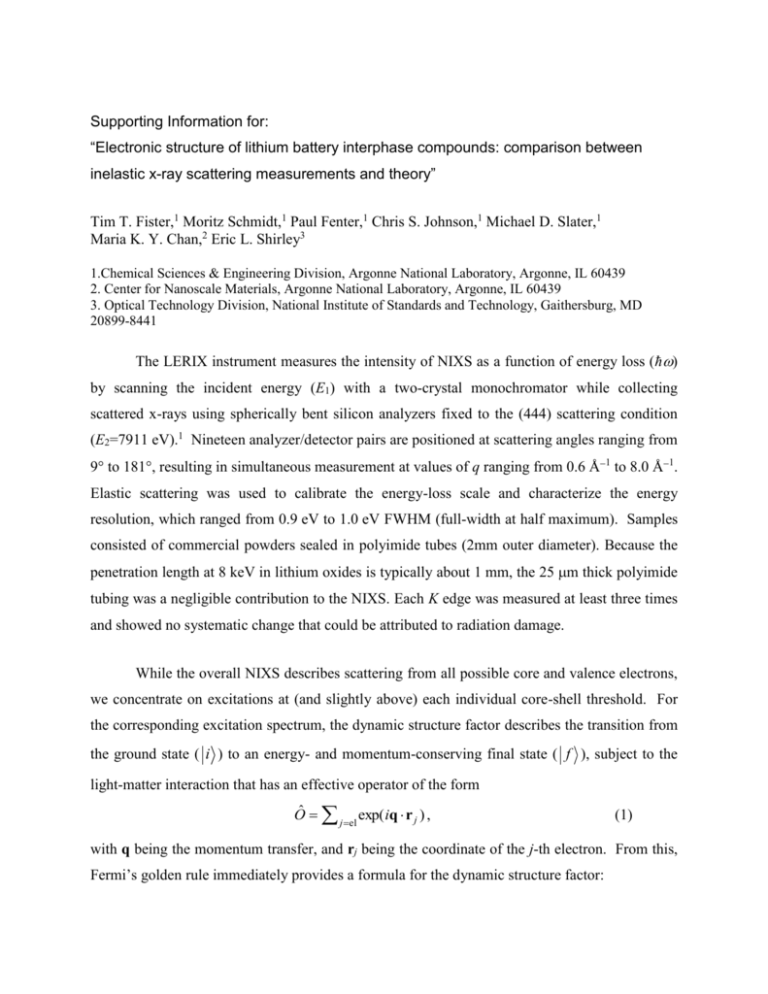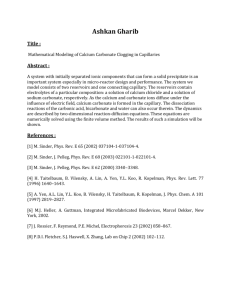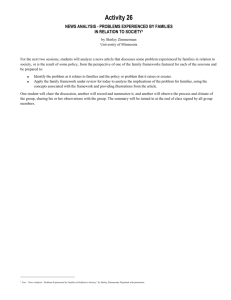SEI_supporting_revised
advertisement

Supporting Information for: “Electronic structure of lithium battery interphase compounds: comparison between inelastic x-ray scattering measurements and theory” Tim T. Fister,1 Moritz Schmidt,1 Paul Fenter,1 Chris S. Johnson,1 Michael D. Slater,1 Maria K. Y. Chan,2 Eric L. Shirley3 1.Chemical Sciences & Engineering Division, Argonne National Laboratory, Argonne, IL 60439 2. Center for Nanoscale Materials, Argonne National Laboratory, Argonne, IL 60439 3. Optical Technology Division, National Institute of Standards and Technology, Gaithersburg, MD 20899-8441 The LERIX instrument measures the intensity of NIXS as a function of energy loss (ħ) by scanning the incident energy (E1) with a two-crystal monochromator while collecting scattered x-rays using spherically bent silicon analyzers fixed to the (444) scattering condition (E2=7911 eV).1 Nineteen analyzer/detector pairs are positioned at scattering angles ranging from 9° to 181°, resulting in simultaneous measurement at values of q ranging from 0.6 Å1 to 8.0 Å1. Elastic scattering was used to calibrate the energy-loss scale and characterize the energy resolution, which ranged from 0.9 eV to 1.0 eV FWHM (full-width at half maximum). Samples consisted of commercial powders sealed in polyimide tubes (2mm outer diameter). Because the penetration length at 8 keV in lithium oxides is typically about 1 mm, the 25 m thick polyimide tubing was a negligible contribution to the NIXS. Each K edge was measured at least three times and showed no systematic change that could be attributed to radiation damage. While the overall NIXS describes scattering from all possible core and valence electrons, we concentrate on excitations at (and slightly above) each individual core-shell threshold. For the corresponding excitation spectrum, the dynamic structure factor describes the transition from the ground state ( i ) to an energy- and momentum-conserving final state ( f ), subject to the light-matter interaction that has an effective operator of the form Oˆ j el exp( iq r j ) , (1) with q being the momentum transfer, and rj being the coordinate of the j-th electron. From this, Fermi’s golden rule immediately provides a formula for the dynamic structure factor: S (q, ) | f Oˆ i |2 ( E f Ei ) . (2) f Considering Eq. (1), the selection rules associated with this operator are more apparent when we expand a given term in the summation, because we have. exp( iq r ) 1 iq r (q r ) 2 / 2 ... (3) For small qa (with a being the 1s initial state’s radius), only the linear term in (3) contributes to the NIXS appreciably. In this regime, the dynamic structure factor is proportional to the dipolelimited processes measured in XAS and small-q EELS.2 For larger q, the next-order, (q r ) 2 / 2 term and even higher-order terms contribute more substantially, aiding observation of dipoleforbidden transitions, such as s→s and s→d, when considering angular momentum about a given lattice site. For a relatively spatially extended core state, such as for the lithium K edge (e.g. 1s initial state), this q-dependence is quite well-known in NIXS3 and has been used to experimentally decouple the s and p-type final states in Li3N.4 In that case, the dynamic structure factor was expanded in a spherical, partial-wave basis, which, for powders, results in an expansion in angular momentum (l) over the density of states (l or ‘l-DOS’), weighted by transition-matrix-element coefficients (Ml) derived from the easily calculated core wave functions.5 Thus, one could equivalently write S (q, ) (2l 1) M l (q, ) l ( ) . 2 (4) l Because antibonding states for lithium oxides are typically limited to s- and p-type states (0 and 1 respectively), the nineteen measurements in q overdetermine Eq. (4) and the unknown components of the l-DOS must be found by a least-squares fit. Whereas EELS has been used outside of the dipole limit in non-forward-scattering geometries,6 multiple scattering of an electron is more prevalent, so that a symmetry-analyzed interpretation might not be as easily applied.7 The BSE NIXS spectra were computed using the NIST BSE core-excitation program (NBSE), and built on density-functional theory (DFT), plane-wave/pseudopotential calculations. More details about the methodology and calculational approach to the DFT calculations are discussed elsewhere.8, 9 An atomic structure program was used to facilitate projector-augmentedwave (PAW) reconstruction of Bloch states to recover all-electron wave functions used for calculating transition matrix elements and electron-core hole interaction matrix elements.10 The core-hole screening was implemented as described elsewhere.11 The BSE calculations were akin to those in the work by Vinson and co-workers.12 In this work, orientational averaging necessary to simulate scattering from powder samples was accomplished by averaging the spectra for q aligned along the three Cartesian directions. The matrix-element-weighted l-DOS was calculated by setting the one-electron matrix elements from a core level to PAW projectors to zero for all but the pertinent l value, for which we only sampled l=0 and l=1. After a given spectrum was calculated, a model self-energy was used to introduce lifetime broadening of spectral features. The self-energy is based on a free-electron-gas for the electronic Green’s function G and a q-dependent model dielectric function. The model dielectric function used the Levine-Louie function for the 1 moment of the of the imaginary part of the dielectric function, screened Coulomb interaction, 2 (q, ) , the numerically calculated density matrix to obtain the 0 moment,13 and the f-sum rule to fix the 1 moment, with the assumed form, 2 (q, ) ( Eg ) ( Eg ) exp[ ( Eg )] , where Eg is the DFT band gap, and , and depend on q.14 Additional broadening was added to match the apparent overall broadening (including resolution effects) present in the measured spectra, including vibrational broadening not considered in the calculations. Finally, the energy scale was also adjusted to account for the core-level binding energy in each compound. This also entailed a relative adjustment of different spectra in cases where there was more than one type of site, which in this work occurred only for the O K edge in LiOH·H2O. To determine the relative core level binding energies for those different types of sites, the method of Tinte and Shirley was followed.15 Charge density isosurfaces were obtained from DFT supercell calculations. For each compound, a supercell was constructed and an explicit 1s core hole placed on a Li atom by constraining the occupation numbers, such that core-level relaxation effects are included. Plane wave DFT calculations were carried out using the Vienna Ab Initio Simulation Package (VASP)16 and accompanying Projector Augmented Wave potentials.17 The partial charge densities corresponding to orbitals in the different features in the l-DOS are summed and isosurfaces plotted. 1. 2. 3. 4. 5. 6. 7. 8. 9. 10. 11. 12. 13. 14. 15. 16. 17. T. T. Fister, G. T. Seidler, L. Wharton, A. R. Battle, T. B. Ellis, J. O. Cross, A. T. Macrander, W. T. Elam, T. A. Tyson and Q. Qian, Rev. Sci. Instrum. 77 (6), 063901 (2006). U. Bergmann, P. Glatzel and S. P. Cramer, Microchem J. 71 (2-3), 221 (2002). M. H. Krisch, F. Sette, C. Masciovecchio and R. Verbeni, Phys. Rev. Lett. 78 (14), 2843 (1997). T. T. Fister, G. T. Seidler, E. L. Shirley, F. D. Vila, J. J. Rehr, K. P. Nagle, J. C. Linehan and J. O. Cross, J. Chem. Phys. 129 (4), 044702 (2008). J. A. Soininen, A. L. Ankudinov and J. J. Rehr, Phys. Rev. B 72 (4) (2005). N. Jiang and J. C. H. Spence, Phys. Rev. B 69 (11), 115112 (2004). J. A. Bradley, G. T. Seidler, G. Cooper, V. M., A. P. Hitchcock, A. P. Sorini, C. Schlimmer and K. P. Nagle, Phys. Rev. Lett. 105 (5), 053202 (2010). E. L. Shirley, L. J. Terminello, J. E. Klepeis and F. J. Himpsel, Phys. Rev. B 53 (15), 10296 (1996). E. L. Shirley, Phys. Rev. B 58 (15), 9579 (1998). E. L. Shirley, PhD thesis, University of Illinois (1991). E. L. Shirley, Ultramicroscopy 106 (11-12), 986 (2006). J. Vinson, J. J. Rehr, J. J. Kas and E. L. Shirley, Phys. Rev. B 83 (11), 115106 (2011). E. L. Shirley, J. A. Soininen and J. J. Rehr, Phys. Scr. T115, 31 (2005). E. L. Shirley, J. A. Soinine and J. J. Rehr, unpublished. S. Tinte and E. L. Shirley, J. Phys., Condens. Matter. 20 (36), 365221 (2008). G. Kresse and J. Furthmüller, Phys. Rev. B 54 (16), 11169 (1996). G. Kresse and D. Joubert, Phys. Rev. B 59 (3), 1758 (1999).



